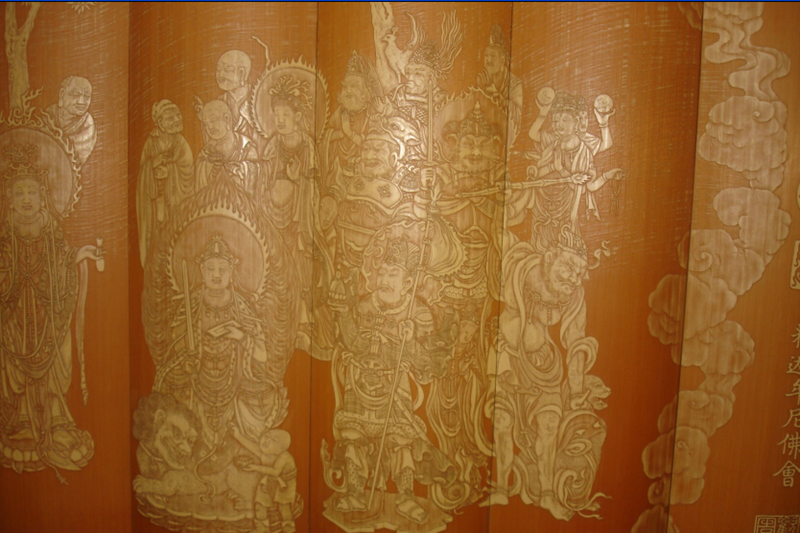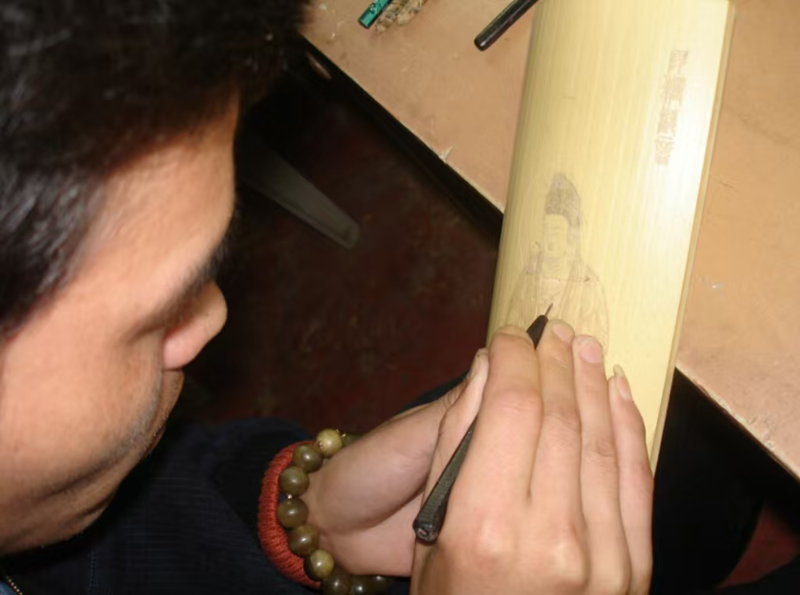
Putian Liuqing bamboo carving work. [Photo/fujian-szwhg.chaoxing.com]
Putian Liuqing bamboo carving is a traditional art form in Putian, Fujian province. It has been recognized as an extension project of the traditional fine arts category on the fourth national-level intangible cultural heritage list.
According to historical research and archaeological evidence, Chinese bamboo carving originated in the Tang Dynasty (618-907), with Putian bamboo carving emerging as an independent traditional craft during the Ming Dynasty (1368-1644). In the Qing Dynasty (1644-1911), Liu Caicheng, a 36th-generation descendant of the Liu family, founded a bamboo carving workshop and gained renown in the craft industry.
Liuqing bamboo carving is a unique art form that utilizes green bamboo skin as a base, carving away the rest to create an artistic design.
Liu's art form involves techniques such as outlining, carving, digging, and scraping, combining elements of Chinese painting.
The Liuqing bamboo carvings are predominantly crafted on items such as pen holders, armrests, paperweights, and folding fans. These pieces often feature a dark hardwood base background combined with woodworking techniques. Light-colored materials like ivory and boxwood are inlaid, resulting in an Eastern aesthetic style.
Liuqing bamboo carving pieces undergo natural oxidation over time, resulting in a harmonious color effect between the bamboo skin, bamboo nodes, and bamboo base. This process enhances their high artistic and collectible value.

A process of Putian Liuqing bamboo carving. [Photo/fujian-szwhg.chaoxing.com]

Copyright © General Office of Fujian Provincial People's Government
Website Identification Code 3500000049Registration Number: 15003084
All rights reserved. The content (including but not limited to text, photo, multimedia information, etc) published in this site belongs to fujian.gov.cn.
Without written authorization from fujian.gov.cn, such content shall not be republished or used in any form.